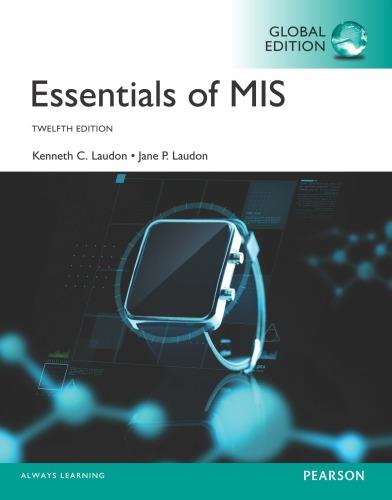Question
1. There are two players, 1 and 2. Each player owns a firm in a Cournot duopoly. The inverse demand function is P = 60
1. There are two players, 1 and 2. Each player owns a firm in a Cournot duopoly. The inverse demand function is P =
60 Q and both firms have the same cost function characterized by a constant marginal cost equal to 12
and zero fixed cost. The firms are run by managers who make all the relevant decisions. The objective of a
manager is to maximize his own income. In the following assume that (0,1). Consider the following
game. First the owner of firm 1 (player 1) decides whether to appoint a manager with a profit-sharing contract
(the manager of firm 1 gets the fraction of the profit of firm 1) or a revenue-sharing contract (the manager
of firm 1 gets the fraction of the revenue of firm 1). Then player 1's decision is made public and the owner
of firm 2 (player 2) makes a similar decision. Then player 2's decision is made public and, afterwards, the
managers simultaneously and independently compete in output levels. Note that the value of is fixed and is
not subject to choice. The only choice each player has is between a profit-sharing and a revenue-sharing
contract.
(a) Sketch the extensive-from game.
(b) Find the pure-strategy subgame-perfect equilibria of this game. [Hint: your answer will have to
distinguish between different values of .]
(c) For the case where
1
20
= find the payoffs of the two players at the subgame-perfect equilibrium.
(d) For the case where
1
20
= give an intuitive explanation for the equilibrium: why do the players make
those choices at the subgame-perfect equilibrium?
2. HAL and JCN are the only producers of personal computers. Their computers are considered
to be perfect substitutes by consumers. The demand function for computers is given by
(Q denotes industry output and P price):
Q = 500 P
2 .
HAL and JCN compete in output levels (Cournot competition). JCN is a fully
integrated firm (it produces all its inputs) and has a constant unit cost of production equal to 3.
HAL, on the other hand, buys the CPUs from Entil (each computer requires one CPU). Entil
publicly announces the (unit) price of CPUs and HAL takes that price as given and decides
how many CPUs to buy. Besides the CPU, each computer requires a bundle of inputs that HAL
produces internally at a (constant) cost of 1. Entil's (constant) cost of producing one CPU is 2.
After many years of operation as separate firms, Entil and HAL apply to the government for
permission to merge. Assume that the government is exclusively concerned with the welfare of
consumers. Should the government allow the merger to take place? (give a detailed proof of
your claim).
Step by Step Solution
There are 3 Steps involved in it
Step: 1

Get Instant Access to Expert-Tailored Solutions
See step-by-step solutions with expert insights and AI powered tools for academic success
Step: 2

Step: 3

Ace Your Homework with AI
Get the answers you need in no time with our AI-driven, step-by-step assistance
Get Started


